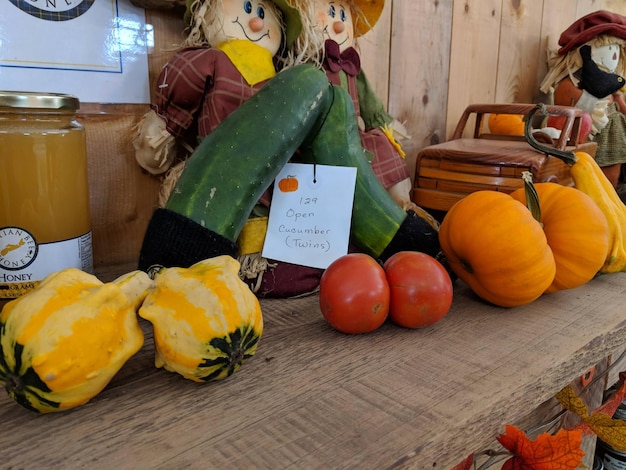State-Specific Resources for Low-Income Individuals: A 2025 Guide

State-Specific Resources for Low-Income Individuals: A Comprehensive List for 2025 serves as a vital guide, detailing assistance programs available across different states to help individuals meet basic needs like housing, food, healthcare, and utilities, ensuring they can access vital support tailored to their specific location.
Are you looking for State-Specific Resources for Low-Income Individuals: A Comprehensive List for 2025? Navigating the landscape of available assistance can be overwhelming, but understanding the resources specific to your state is essential for accessing the support you need to improve your quality of life.
Understanding State-Specific Assistance Programs
Each state within the United States operates a unique set of assistance programs designed to address the specific needs of its low-income residents. These programs can vary significantly in terms of eligibility criteria, benefit levels, and the types of support they offer, making it vital to understand what is available in your particular state.
These programs are funded through a combination of federal and state resources, allowing each state to tailor its approach to poverty reduction based on its own demographics, economic conditions, and policy priorities. Knowing about these can make a huge difference.
Variations in Program Design
State-specific assistance programs often differ in how they deliver services. Some states may emphasize direct financial assistance, while others focus on providing in-kind benefits, such as food vouchers or subsidized housing. Additionally, states may integrate their programs with other services, such as job training or childcare, to promote self-sufficiency.
Eligibility Requirements
Eligibility for state-specific assistance programs typically depends on factors such as income, household size, and residency status. States may also consider factors such as disability, age, or employment status when determining eligibility. It’s crucial to review the specific requirements for each program to ensure you meet the criteria.

- Supplemental Nutrition Assistance Program (SNAP): Provides food assistance to low-income individuals and families.
- Temporary Assistance for Needy Families (TANF): Offers cash assistance and support services to families with children.
- Medicaid: Provides healthcare coverage to eligible low-income individuals and families.
Understanding the nuances of state-specific assistance programs is essential for ensuring that low-income individuals can access the resources they need to improve their well-being and achieve greater economic stability. By familiarizing yourself with the programs available in your state, you can take advantage of the support services that are designed to help you thrive.
Navigating Housing Assistance at the State Level
Housing is a fundamental need, and accessing affordable housing can be a significant challenge for low-income individuals. State-level housing assistance programs aim to bridge this gap by providing various forms of support to help individuals secure and maintain stable housing. These programs can include rental assistance, public housing, and homeownership assistance.
It is important to note that these programs may also have specific eligibility criteria, such as income thresholds, residency requirements, and household composition. States often prioritize certain populations, such as families with children, seniors, and individuals with disabilities. The options vary greatly from state to state.
Rental Assistance Programs
Rental assistance programs, such as Housing Choice Vouchers (Section 8), help low-income individuals afford housing in the private market. These programs typically involve a voucher that covers a portion of the rent, with the tenant paying the remaining amount. States may also offer their own rental assistance programs with different eligibility criteria and benefit levels.
Public Housing
Public housing provides subsidized housing units owned and managed by state or local government agencies. These units are typically offered at below-market rates to eligible low-income individuals and families. Public housing can be a stable and affordable housing option, but waiting lists may be long due to high demand.
- Subsidized Housing: Rental units offered at reduced rates to eligible low-income tenants.
- Emergency Housing Assistance: Temporary housing and supportive services for individuals and families experiencing homelessness.
- Homeownership Programs: Assistance for first-time homebuyers, including down payment assistance and mortgage subsidies.
Navigating housing assistance programs at the state level requires thorough research and a clear understanding of eligibility requirements and application processes. By exploring these options, low-income individuals can increase their chances of finding stable and affordable housing, which is essential for overall well-being and economic stability.
Accessing Food and Nutritional Support in Your State
Food insecurity is a pervasive issue for many low-income individuals and families. Fortunately, states offer various food and nutritional support programs to help ensure that residents have access to adequate and nutritious food. These programs can include food banks, food pantries, and nutritional assistance programs.
These programs are designed to supplement the food budgets of low-income households, providing them with access to essential groceries and other food items. Understanding your options is essential.

Supplemental Nutrition Assistance Program (SNAP) Details
SNAP, also known as food stamps, is a federally funded program that provides monthly benefits to eligible low-income individuals and families to purchase groceries. The amount of benefits depends on factors such as household size, income, and expenses. SNAP benefits can be used at most grocery stores and some farmers’ markets.
Food Banks and Pantries
Food banks and pantries are community-based organizations that collect and distribute food to individuals and families in need. These organizations rely on donations from individuals, businesses, and government agencies to provide a wide range of food items, including non-perishable goods, fresh produce, and baked goods. Food banks and pantries can be a valuable resource for those experiencing food insecurity.
By tapping into food banks, nutritional programs, and other options, you can take steps to prevent or alleviate food insecurity, ensuring that you and your loved ones have access to the nutrients you need to thrive. When exploring options, remember all communities and counties offer slightly different options.
- School Lunch Programs: Free or reduced-price meals for eligible students.
- Women, Infants, and Children (WIC): Nutritional assistance and support for pregnant women, new mothers, and young children.
- Senior Meal Programs: Nutritious meals for seniors, often served at community centers or delivered to homes.
Healthcare Resources Tailored to Your State
Access to affordable healthcare is a critical concern for low-income individuals. States offer a range of healthcare resources to help ensure that residents can access the medical care they need, regardless of their income level. These resources can include Medicaid, community health centers, and state-specific healthcare programs.
These programs reduce the financial burden of healthcare and connect individuals with the medical services they need to maintain their health and well-being. Many programs are federally and state funded, making them easier to access.
Medicaid Coverage Explained
Medicaid is a joint federal and state program that provides healthcare coverage to millions of low-income Americans. Eligibility for Medicaid varies by state, but it generally covers individuals and families with limited income and resources. Medicaid typically covers a wide range of medical services, including doctor visits, hospital care, prescription drugs, and mental health services.
Community Health Centers
Community health centers are non-profit healthcare providers that offer affordable medical care to underserved communities. These health centers typically provide primary care services, preventive care, and health education. They often operate on a sliding fee scale, meaning that patients pay what they can afford based on their income. Community health centers can be a vital resource for those who lack health insurance or have difficulty accessing traditional healthcare providers.
Navigating healthcare resources at the state level might require some research, but it is essential for ensuring that you receive the medical care you need without incurring overwhelming expenses. By exploring these options, low-income individuals can safeguard their health and well-being.
Utility Assistance Programs across States
Paying for utilities such as electricity, heating, and water can be a struggle for low-income individuals, especially during extreme weather conditions. To help alleviate this burden, states offer various utility assistance programs that provide financial assistance and energy-saving resources. These programs can include the Low Income Home Energy Assistance Program (LIHEAP) and state-specific utility assistance programs.
These programs help eligible households manage their energy bills and ensure they have access to essential utilities throughout the year. Understanding such programs, and their eligibility requirements, can make a huge difference for those in need.
Low Income Home Energy Assistance Program (LIHEAP)
LIHEAP is a federally funded program that helps low-income households pay their heating and cooling bills. LIHEAP grants are typically awarded based on income and household size, and the amount of assistance varies by state. LIHEAP can provide a much-needed safety net for families struggling to afford their energy bills.
State-Specific Utility Assistance Programs
In addition to LIHEAP, many states offer their own utility assistance programs with different eligibility criteria and benefit levels. These programs may be funded by state taxes or through partnerships with utility companies. State-specific utility assistance programs can provide additional support to low-income households beyond what is available through LIHEAP.
- Weatherization Assistance: Home improvements to increase energy efficiency and reduce utility bills.
- Payment Assistance Programs: Financial assistance to help pay overdue utility bills.
- Budget Counseling: Guidance on managing utility expenses and creating a budget.
By leveraging utility assistance and energy conservation programs, low-income individuals can reduce their utility costs and improve the energy efficiency of their homes. Explore energy assistance programs that can help keep your utility bills manageable all year round.
Additional State-Specific Resources for Low-Income Individuals
Beyond the core areas of housing, food, healthcare, and utilities, states offer a range of additional resources to support low-income individuals. These resources can include job training programs, childcare assistance, and legal aid services.
These programs can help individuals improve their skills, access affordable childcare, and navigate legal challenges, ultimately promoting greater economic stability and self-sufficiency. Understanding these programs, and their eligibility requirements, can make a huge difference for those in need.
Job Training and Employment Services
Many states offer job training programs and employment services to help low-income individuals gain the skills and experience they need to find stable employment. These programs may include vocational training, job search assistance, resume writing workshops, and interview skills training. Job training programs can be a valuable stepping stone to long-term employment and career advancement.
Childcare Assistance Programs
Childcare can be a significant expense for low-income families with young children. States offer childcare assistance programs to help eligible families afford quality childcare services. These programs may provide subsidies to childcare providers or direct payments to families to help offset the cost of care. Childcare assistance can enable parents to work or attend school while ensuring that their children are in a safe and nurturing environment.
Ultimately, states provide a range of supplemental services to help those in need. By exploring all available options, low-income individuals can access a comprehensive suite of resources that can help them achieve financial stability and improve their overall well-being.
- Transportation Assistance: Help getting to work, school, or medical appointments.
- Legal Aid Services: Free or low-cost legal assistance for civil cases.
- Financial Literacy Programs: Education on budgeting, saving, and managing finances.
| Key Resource | Brief Description |
|---|---|
| 🏠 Housing Assistance | Programs for rental aid, public housing, and homeownership. |
| 🍎 Food Support | Access to SNAP, food banks, and nutritional programs. |
| ⚕️ Healthcare Access | Medicaid coverage and community health centers are available. |
| 💡 Utility Aid | Assistance with energy bills via LIHEAP and state programs. |
Frequently Asked Questions
▼
States offer resources such as housing assistance, food support, healthcare access, utility aid, job training, and childcare assistance, tailored to the needs of low-income residents.
▼
Begin by visiting your state’s official government website or calling 211 to connect with local agencies and service providers in your area.
▼
LIHEAP is a federally funded program that helps low-income households pay their heating and cooling bills, preventing utility shutoffs and ensuring access to essential services.
▼
Community health centers offer affordable medical care on a sliding fee scale, ensuring that individuals pay what they can afford based on their income and ability to pay.
▼
Job training offers those in need vocational skills, job search, resume help, and interview prep, leading to better employment opportunities.
Conclusion
Understanding and accessing state-specific resources for low-income individuals: a comprehensive list for 2025 is essential for improving the lives of vulnerable populations. By taking advantage of the programs and services available, individuals can overcome financial challenges and build a path towards greater stability and prosperity.






